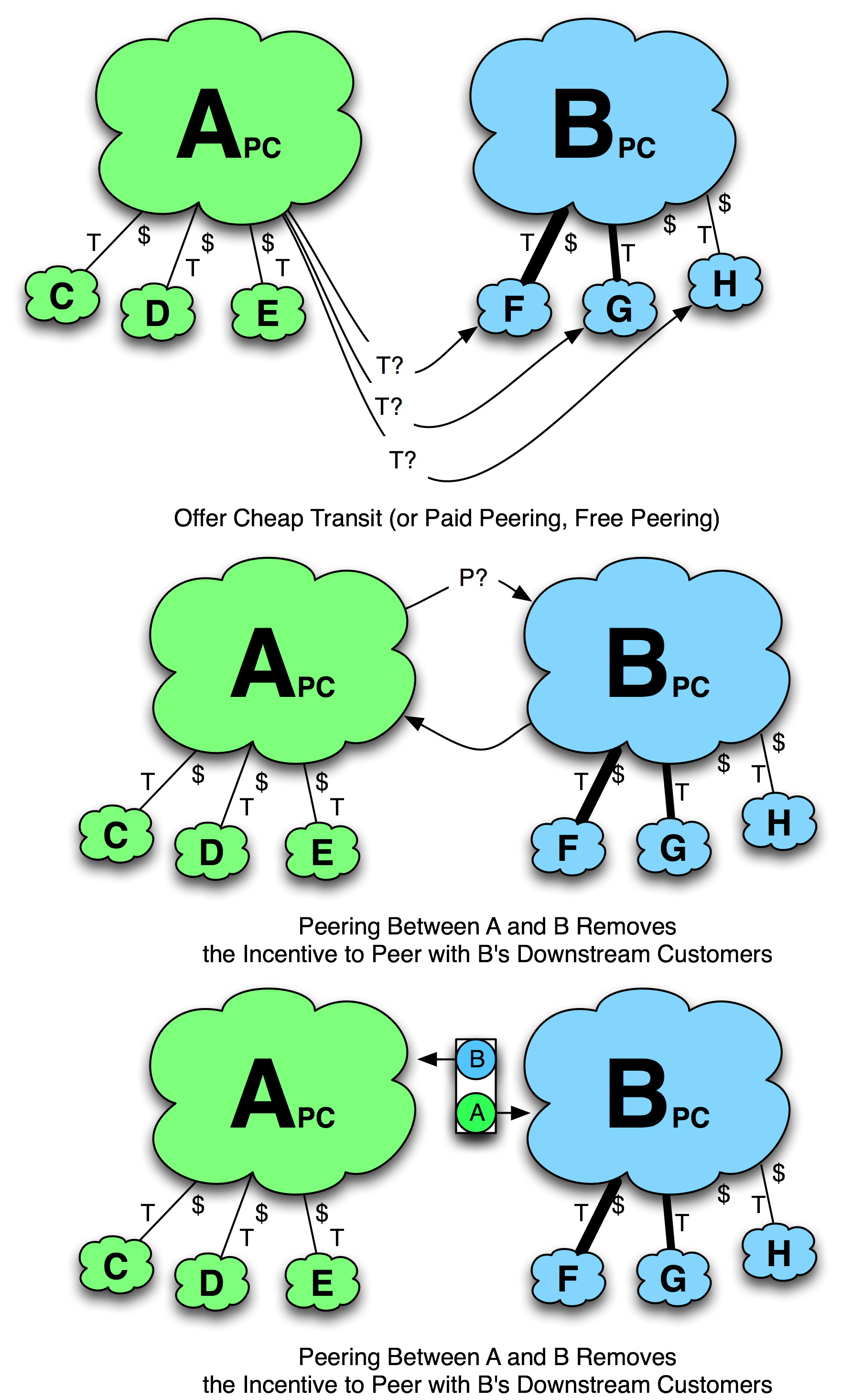Tactic 3. The End-Run Maneuver
The end-run maneuver is to aggressively seek interconnections with the target ISP’s largest traffic volume customers (see Figure 11-13).
These largest ISP B customers are then offered very-low-cost transit services by ISP A. As a fallback position, ISP A might offer Paid Peering or free peering. If these interconnect relationships are established, ISP A bypasses the target ISP, and reduces both ISP A’s cost of transit and its need to peer with the target ISP.
Once ISP B sees the customer traffic shift, ISP B will most likely decide that it would rather peer and continue to get the revenue from its customers than to lose them to ISP A. Peering is established, and, perhaps the bypass relationships discontinue.
The difficulty with this approach is that it can take a while. NetFlow traffic analysis will indicate where the traffic is flowing and can help prioritize which customers to target, but there may be a lengthy and costly sales cycle in order to obtain sufficient traffic volume to reach the desired end-run goal. Ultimately the goal is to minimize the need for peering with the target ISP. Then ironically, when you need it less, you can more easily get it. (Some people tell me it is like dating in this respect.)
Cherry picking may end up annoying the target ISP, but it has been used to obtain peering.

Figure 11-13. The End-Run Maneuver cherry picks the most attractive target ISP customers for interconnections.

